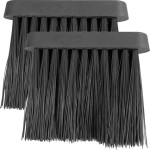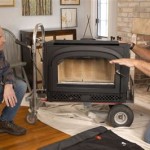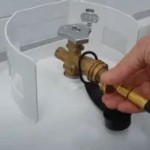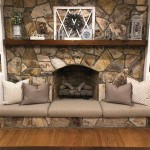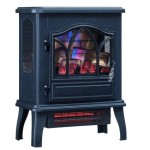Air Conditioner Above Fireplace: Considerations and Alternatives
The placement of an air conditioner above a fireplace presents a combination of engineering, aesthetic, and practical challenges. While seemingly a space-saving solution, this configuration necessitates a thorough evaluation of potential drawbacks and necessitates exploration of alternative cooling options.
Fireplaces, by nature, generate significant heat that rises. Air conditioners, conversely, function most effectively when drawing in relatively cooler air. This fundamental conflict in operational temperature requirements is the primary concern when considering an air conditioner above a fireplace. The rising heat from the fireplace can impede the air conditioner's ability to efficiently cool the room, potentially leading to increased energy consumption and decreased lifespan of the unit.
Furthermore, the structural integrity of the wall above the fireplace must be assessed. Fireplaces often have chimneys or other structures that may obstruct the proper installation of an air conditioning unit. The weight of the air conditioner, combined with the vibrations generated during operation, could potentially compromise the structural integrity of the wall if not properly reinforced. This is particularly relevant for older homes with potentially weaker wall structures.
The aesthetic impact of placing an air conditioner above a fireplace should also be considered. Fireplaces are frequently focal points within a room, and the visual presence of an air conditioner can detract from the fireplace's aesthetic appeal. The bulky appearance of a standard window unit or even a mini-split system can disrupt the room's overall design. Careful consideration must be given to the unit's size, style, and color to minimize visual intrusion.
Heat Interference and Energy Efficiency
The issue of heat interference is central to the discussion of air conditioner placement above a fireplace. Heat rises, and a functional fireplace emits a substantial amount of it. Placing an air conditioner directly above this heat source forces the appliance to work harder to cool the incoming air. This increased workload translates to higher energy consumption and potentially higher electricity bills. The air conditioner will cycle more frequently, consuming more power to maintain the desired temperature.
Over time, this constant strain can significantly reduce the lifespan of the air conditioner. The compressor, the heart of the cooling system, is particularly vulnerable to damage from overheating. Repeated exposure to high temperatures can cause premature wear and tear, leading to costly repairs or the need for complete replacement. This is particularly true for older or less efficient air conditioning models. Even newer models with advanced energy-saving features will likely experience reduced efficiency when operating in close proximity to a heat source.
The effectiveness of the air conditioner's thermostat is also compromised in this scenario. The thermostat, responsible for regulating the cooling cycle, will register a higher temperature due to the rising heat from the fireplace. This inaccurate temperature reading will cause the air conditioner to run for longer periods than necessary, further contributing to energy waste. The thermostat might continuously signal the unit to cool, even when the rest of the room has reached a comfortable temperature, resulting in an uneven distribution of cool air and amplified energy expenditure.
Structural and Installation Challenges
The structural integrity of the wall above the fireplace is a crucial consideration. Fireplaces are typically integrated into a chimney structure, often constructed from brick, stone, or masonry. These structures can be heavy and potentially unstable if modified inappropriately. Installing an air conditioner necessitates drilling into the wall to secure mounting brackets or other support systems. Drilling into a chimney structure requires specialized tools and expertise to avoid damaging the chimney or compromising its structural integrity.
Furthermore, the wall above the fireplace may contain hidden electrical wiring or plumbing. Drilling without proper knowledge of the wall's infrastructure can lead to serious electrical hazards or water damage. It is imperative to conduct a thorough inspection of the wall before commencing any installation work. This may involve using a stud finder or consulting with a qualified electrician or plumber to identify the location of any hidden utilities.
The weight of the air conditioner itself presents a structural challenge. Air conditioning units, particularly larger models, can be quite heavy. The wall must be capable of supporting this weight without sagging or cracking. Reinforcing the wall may be necessary, especially in older homes with potentially weaker construction. This could involve adding additional support studs or using specialized mounting brackets designed for heavy loads. Failure to adequately support the air conditioner can result in structural damage to the wall and potentially pose a safety hazard.
Aesthetic Considerations and Alternative Options
The aesthetic impact of an air conditioner positioned above a fireplace is a significant factor for many homeowners. Fireplaces are often designed as focal points, providing warmth and visual appeal to a room. The addition of an air conditioning unit, particularly a bulky window unit, can detract from the fireplace's aesthetic quality and disrupt the room's overall design.
The visual clash between the traditional design of a fireplace and the modern appearance of an air conditioner can be particularly jarring. The unit's plastic housing, metal grills, and visible vents can clash with the fireplace's brick, stone, or wood accents. This visual dissonance can create an undesirable aesthetic imbalance within the room. Careful consideration should be given to the unit's style, color, and size to minimize its visual impact.
Given the potential drawbacks of placing an air conditioner above a fireplace, exploring alternative cooling options is advisable. Window units can be installed in other windows within the room, avoiding the direct heat interference from the fireplace. Portable air conditioners offer flexibility and can be easily moved to different locations as needed. Ductless mini-split systems provide a more permanent and energy-efficient solution, with the indoor unit mounted on a wall away from the fireplace and connected to an outdoor compressor. Ceiling fans can also be used to circulate air and create a cooling effect, either as a standalone solution or in conjunction with other cooling methods.
In summary, while installing an air conditioner above a fireplace may seem like a convenient way to save space, it is crucial to carefully weigh the potential consequences. The heat interference, structural challenges, and aesthetic considerations must be thoroughly assessed before proceeding. Exploring alternative cooling options may provide a more efficient, aesthetically pleasing, and structurally sound solution.

Air Conditioning Sunshineworks

Friedrich Kuhl Series 20 000 Btu Smart Window Wall Air Conditioner With 4 Fan Sds Remote Control White P C Richard Son

10 Ways To Hide Your Air Conditioner Houzz Au

What Influences Air Conditioner Location Daikin

Designer Tips To Integrate Heat Pump And Air Conditioner Units With Existing Interior Design Decor Built In Furniture Traditional Family Room

View Topic Help Where To Put The Tv Aircon Above Fireplace Home Renovation Building Forum

Napoleon Allure 60 Electric Fireplace Maple Air Inc Heating Conditioning Heat Pumps Quality

Beyond Ac Savvy Ways To Keep Your Home Cool

Bedroom Air Conditioning Crown Power

Supplementing A Wood Stove With Ductless Mini Split Heat Pump For This Winchester Home
Related Posts


